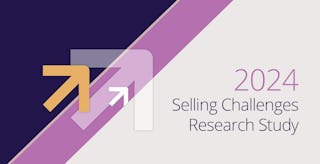How To Measure Sales Training Impact

Richardson Sales Performance's Customer Success Group has one purpose: To drive the adoption of our capabilities within our client’s community, provide measurable results, and document the captured value. This cannot be achieved without measurement, which is why it is a key component in our Customer Engagement Model.
Knowing this, we thought it would be helpful to explain how we established our measurement construct and the key types of measurement that we track, but even more importantly, what should you be measuring as you go through this engagement with us to ensure that you are capturing the value.
When establishing our measurement construct, we looked at two specific approaches:
- Donald Kirkpatrick’s 4 Level Approach for evaluating program effectiveness measurement levels. This focuses on program effectiveness associated with program quality.
- Dressler & Brinkerhoff’s Success Case Method which separates out participants who have successfully adopted from those who have not. This assumes program effectiveness relies on supporting performance systems and the interaction of the program with common business practices.
Initiate Stage
The first thing that you need to do as part of the Initiate Stage is define your success criteria for the initiative and set up KPIs. Here are five key questions to help with determining your measurement plan:
- What is the desired business outcome of the initiative?
- What are the pipeline metrics that indicate achievement of the desired outcome of the initiative?
- What are the changes in target audience’s on-the-job behaviors required to produce the desired pipeline metrics?
- What specific improvements in skills are needed to change audience’s behaviors?
- What content will provide the skill improvements?
Discover Stage
In the Discover Stage, you will want to make sure that you have a baseline of the Pipeline Impact and Business Results metrics so that you can monitor and track your results along the way. You will also be able to begin tracking Understanding & Knowledge metrics.
As you move into the Deploy Stage and begin successfully rolling out the program, you will be able to track Understanding & Knowledge metrics, as well as, Reaction.
Reinforcement Stage
The Reinforcement Stage is where you will start tracking Job Behavior metrics and monitor the Pipeline Impact to look for improvements or possible areas for reinforcement.
Embed Stage
Finally, in the Embed Stage, you will be able to see how all of your hard work has improved your Business Results! To further illustrate, below is an example of metric linkage across tiers.
As you start on your measurement journey, here are a few key tips to remember:
- Starting with the End in Mind requires cross-functional involvement and a detailed look at current sales performance gaps
- Establishing a Measurement Construct requires internal agreement on measurement priorities and assumptions about data reliability
- Linking the Initiative’s Purpose with the Measurement Construct requires an honest assessment of internal sales systems’ ability to support the measurement process, in order to create a realistic measurement plan
- Measuring the Impact of the Program On The Job and On The Business requires blending various techniques and ongoing sales management support
- Interpreting the Program Measurements requires a thoughtful examination of the inter-relationship between key sales and financial metrics

Sales Training Measurement Strategy Brochure
Learn more about our research-based measurement methodology.
DownloadGet industry insights and stay up to date, subscribe to our newsletter.
Joining our community gives you access to weekly thought leadership to help guide your planning for a training initiative, inform your sales strategy, and most importantly, improve your team's performance.






